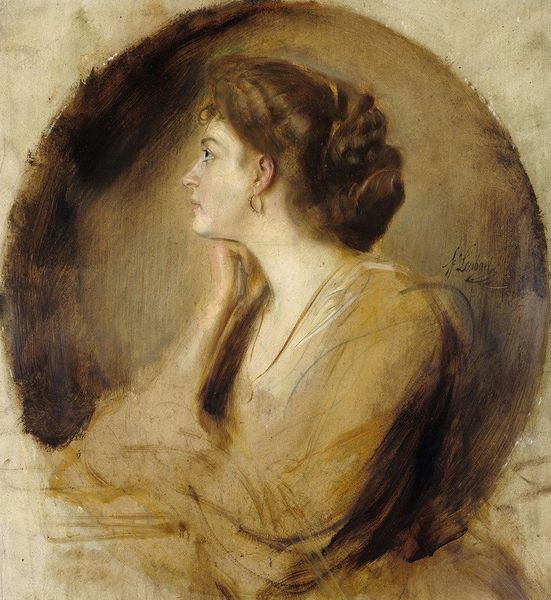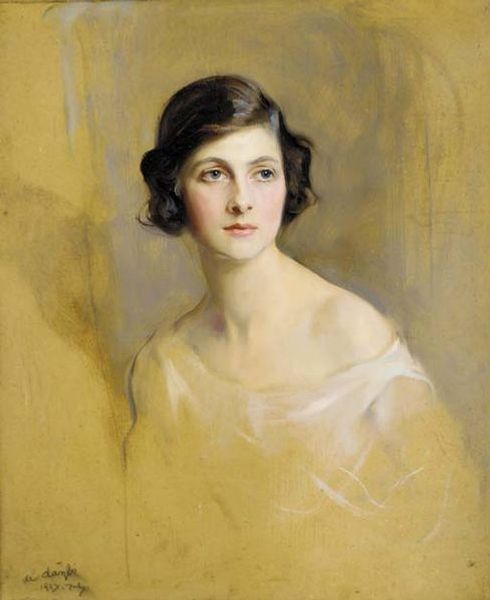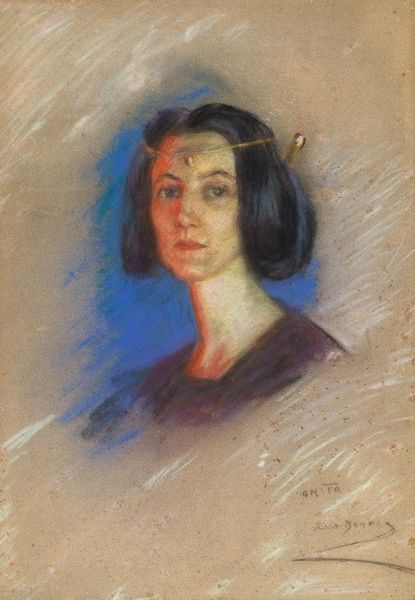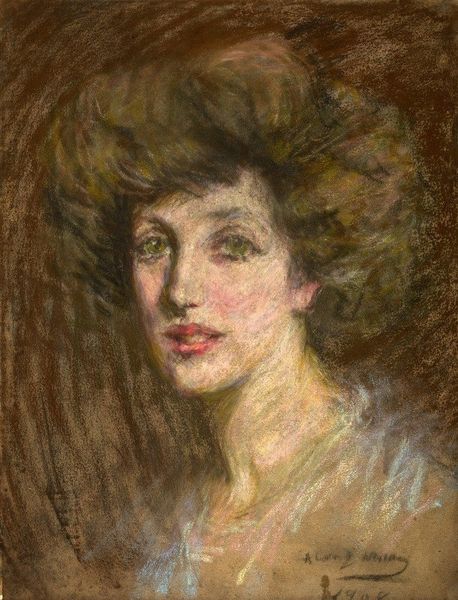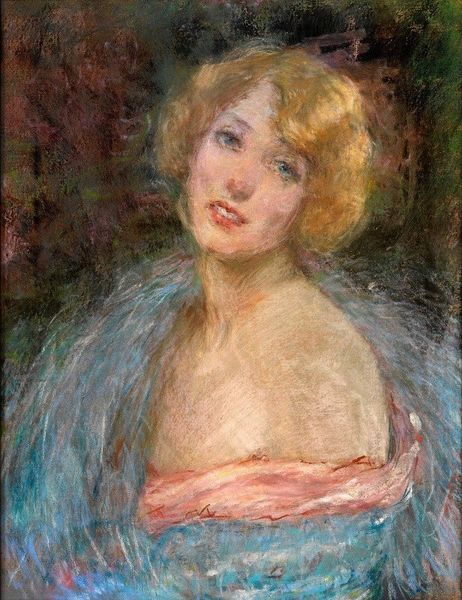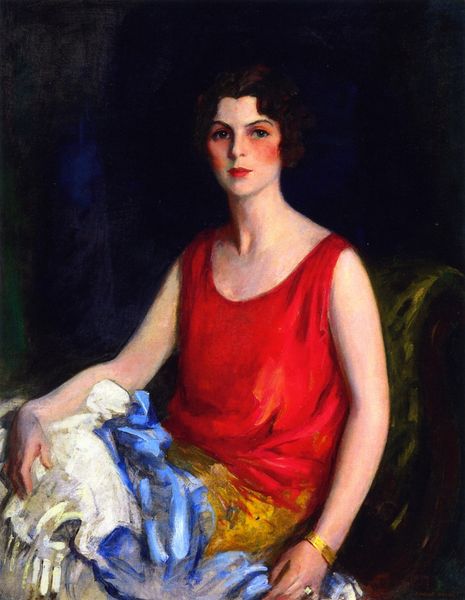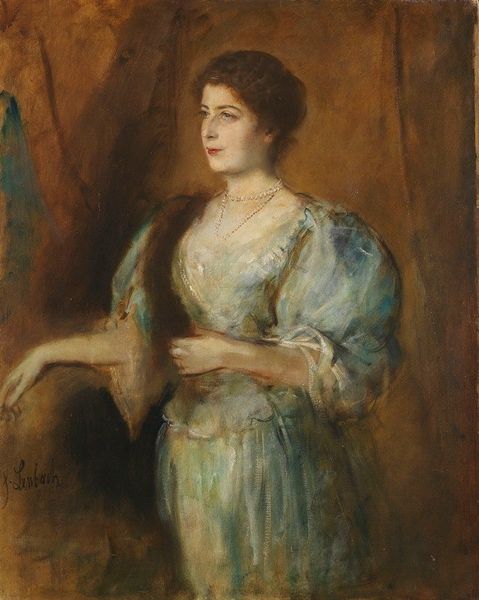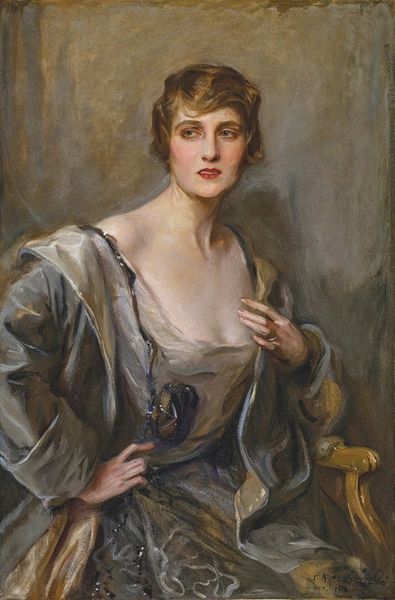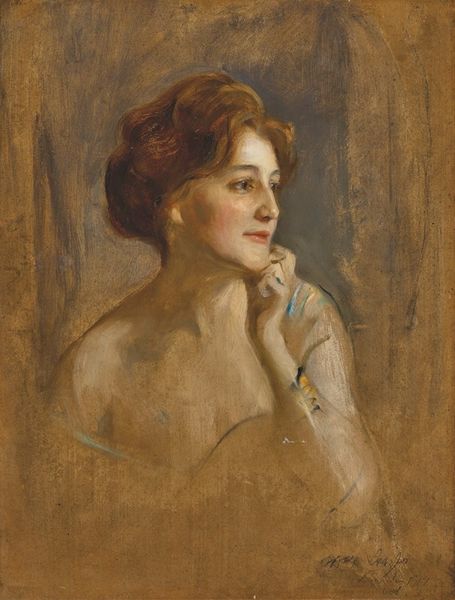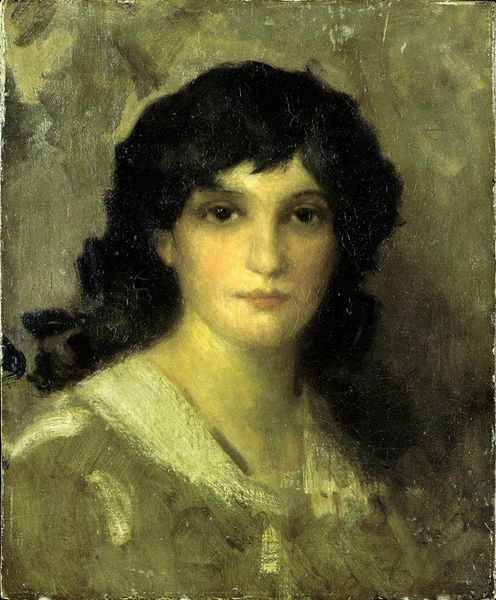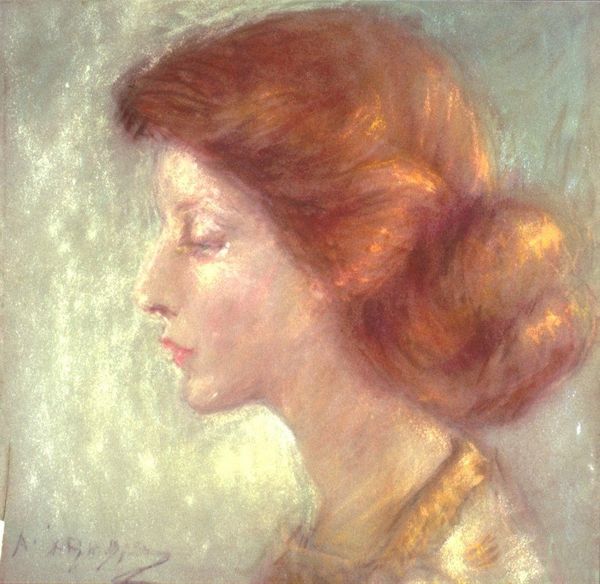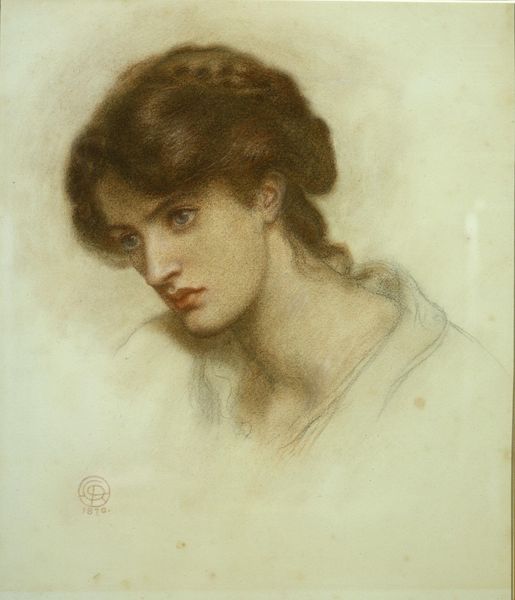
Copyright: Public domain
Curator: We are looking at Philip Alexius de László’s 1924 portrait of Edwina Mountbatten, Countess Mountbatten of Burma. The medium is oil paint. Editor: It feels...almost unfinished? See how the background dissolves into this ochre haze, like a dream fading at the edges. And those visible brushstrokes. Curator: Indeed. De László's handling of the medium creates a kind of luminosity. Notice how the impasto in her face catches the light, and the warm tones interplay to soften the subject's features. Semiotically, the painting seems designed to highlight her societal position while presenting a softness in expression. Editor: Her almost-bare shoulders certainly play into that. What do you read from her being rendered semi-nude? The gaze seems self-assured, though a hint of sadness lingers at the corners of her eyes. It’s not about mere societal portrayal; it's also presenting her vulnerability. Given her later reputation, perhaps this is a presentation of both an ingénue and something of her forward attitude towards intimacy. Curator: An interesting point. The composition guides us from the defined details of her face down through the curve of her shoulder, where the detail softens again. She appears at once concrete and ephemeral. Editor: The pearl earring -- is that her signifier? It provides the punctuation to an otherwise fluid pictorial language. It may imply wealth or refinement. What does it signal to you? Curator: Within this setting it stands as the singular, defined counterpoint to all that is fluid. The use of academic-art style contributes an aura of elevated status and historical placement, an understanding that a woman such as this has a certain cultural and artistic continuity. Editor: It really underscores how portraiture is more than just capturing a likeness. It is constructing a carefully considered representation for public consumption. It’s also fascinating how we bring our own experiences to what the artist paints—the layers of meaning are never really fixed. Curator: Precisely, and that’s part of what keeps art so engaging; its ability to spark new reflections with each encounter.
Comments
No comments
Be the first to comment and join the conversation on the ultimate creative platform.
